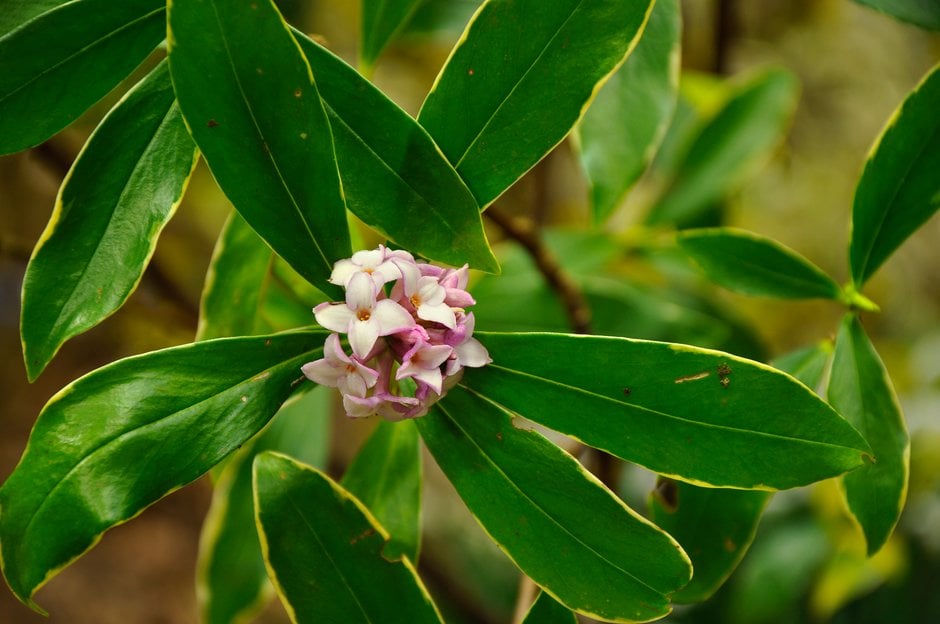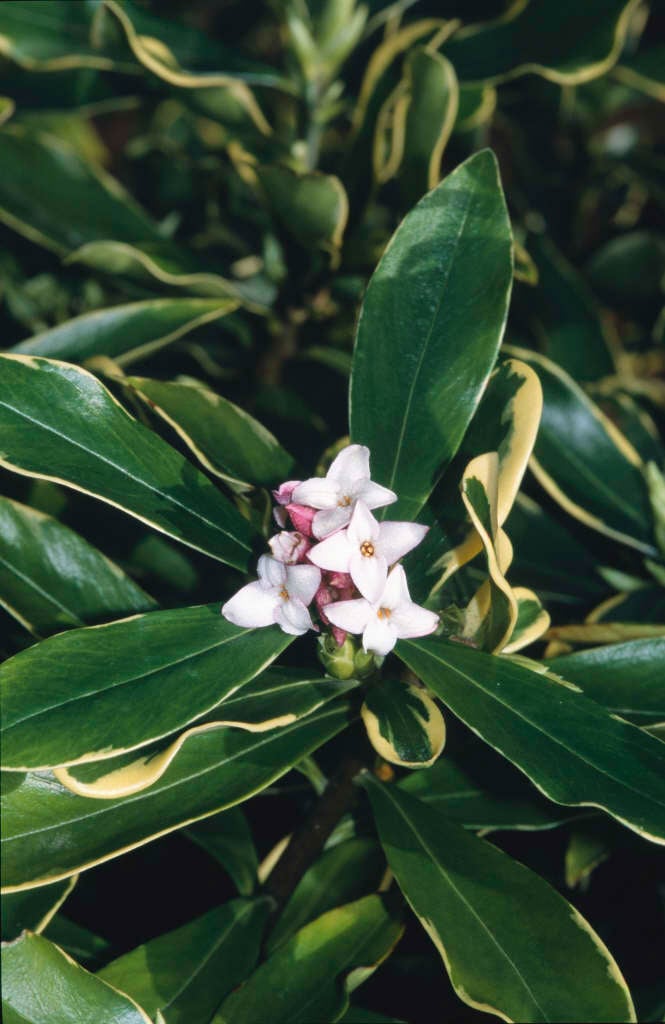Daphne odora 'Aureomarginata' (v)
gold-edged winter daphne
A compact evergreen shrub with leathery dark green leaves narrowly edged with yellow, and clusters of fragrant purplish-pink flowers, white within, in early spring
Size
Ultimate height
1–1.5 metresTime to ultimate height
5–10 yearsUltimate spread
1–1.5 metresGrowing conditions
Moisture
Moist but well–drained, Well–drainedpH
Acid, Alkaline, NeutralColour & scent
| Stem | Flower | Foliage | Fruit | |
| Spring | Pink Purple White | Green Yellow Variegated | ||
|---|---|---|---|---|
| Summer | Green Yellow Variegated | |||
| Autumn | Green Yellow Variegated | |||
| Winter | Green Yellow Variegated |
Position
- Full sun
- Partial shade
Aspect
North–facing or West–facing or East–facing
Exposure
Sheltered Hardiness
H4Botanical details
- Family
- Thymelaeaceae
- Native to GB / Ireland
- No
- Foliage
- Evergreen
- Habit
- Bushy
- Potentially harmful
- TOXIC if eaten, skin irritant. Wear gloves and other protective equipment when handling TOXIC to pets - see the HTA guide to potentially harmful plants for further information and useful contact numbers
- Genus
Daphne can be deciduous or evergreen shrubs with small, usually very fragrant tubular, 4-lobed flowers, often followed by colourful berries
- Name status
Accepted
How to grow
Cultivation
Grow in fertile, moist but well-drained soil in full sun to partial shade. Mulch annually in spring with well-rotted organic matter to keep the roots cool. Not reliably hardy in exposed conditions, may need winter protection. Resents root disturbance and transplanting. See daphne cultivation for more information
Propagation
Propagate by semi-hardwood cuttings or grafting
Suggested planting locations and garden types
- City and courtyard gardens
- Patio and container plants
- Cottage and informal garden
- Low Maintenance
- Flower borders and beds
- Wall side borders
Pruning
See pruning groups 1 and 8; keep pruning to a minimum
Pests
May be susceptible to aphids and slugs but generally pest-free
Diseases
May be susceptible to honey fungus (rarely), phytophthora root rot, fungal leaf spot and virus diseases
Love gardening
Sign up to receive regular gardening tips, inspiration, offers and more
View our Privacy Policy
Get involved
The Royal Horticultural Society is the UK’s leading gardening charity. We aim to enrich everyone’s life through plants, and make the UK a greener and more beautiful place.

